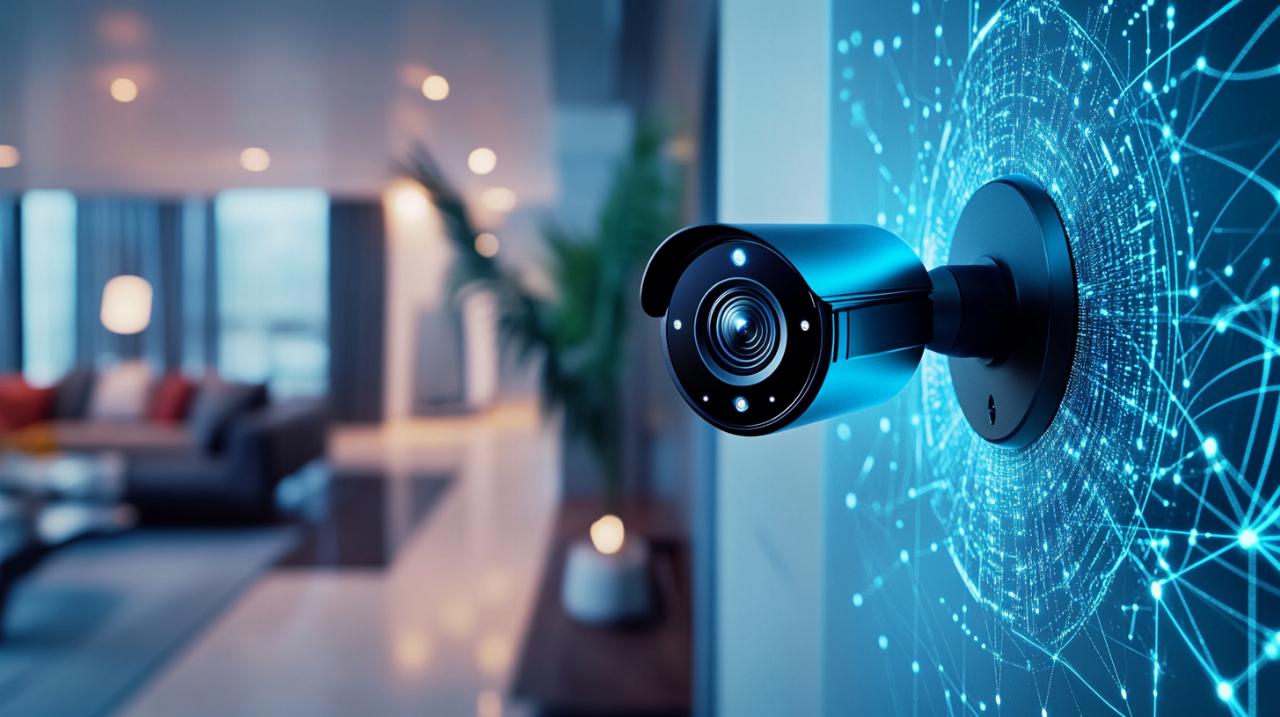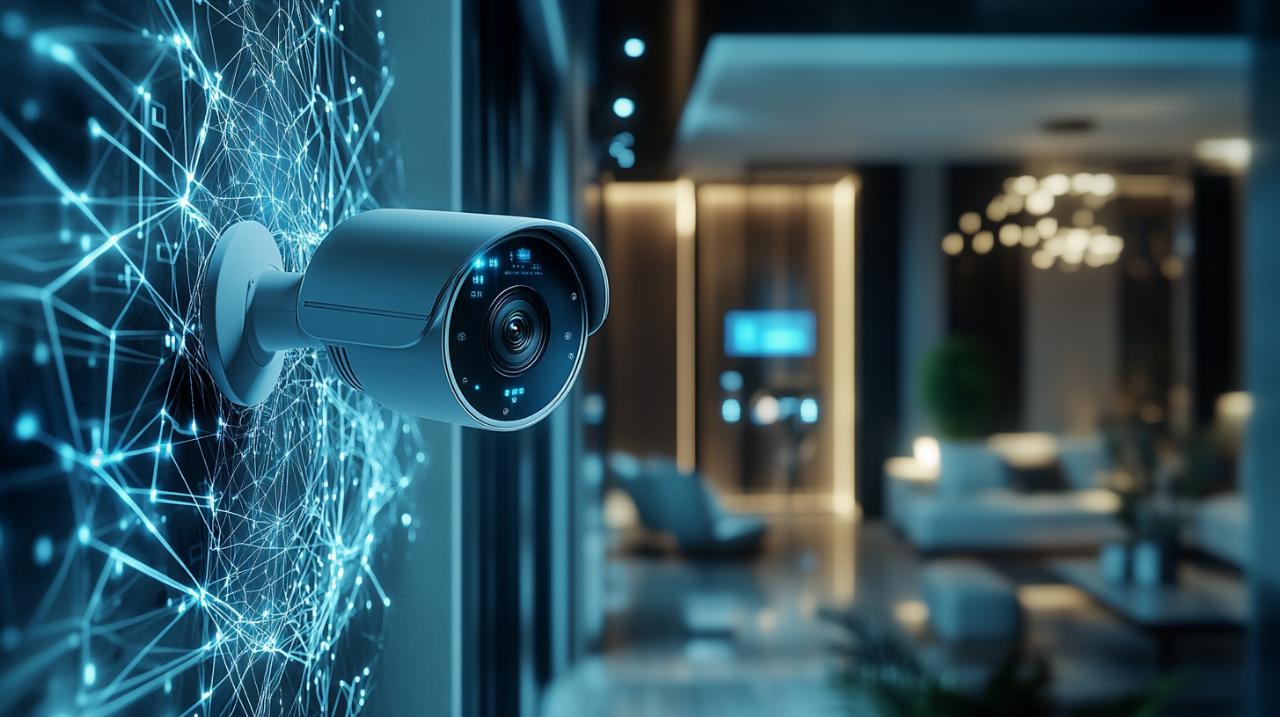Understanding IP Cameras: Operational Benefits and Motion Detection Features for Modern Surveillance
Modern surveillance technology has revolutionised the way businesses and homeowners approach security, with internet protocol cameras emerging as a sophisticated solution that combines flexibility, clarity, and intelligent monitoring capabilities. These advanced devices leverage existing network infrastructure to deliver high-definition video footage directly to recording devices and monitoring stations, enabling real-time observation from virtually anywhere with an internet connection. As traditional analogue systems become increasingly obsolete, understanding how these digital cameras function and what advantages they offer has become essential for anyone seeking comprehensive protection for their premises.
How ip cameras operate within your network infrastructure
The technology behind internet protocol video transmission
Internet protocol cameras function as specialised digital devices that capture video footage and transmit it across a local area network using standard internet protocols. Unlike their analogue predecessors that required dedicated cabling to recording equipment, these cameras compress captured images and send them through ethernet cables or wireless connections to a network video recorder or directly to cloud-based storage solutions. The camera itself acts as a network device with its own address, allowing it to communicate seamlessly with other components within your security infrastructure. This digital approach means that footage is converted into data packets that travel across your network, similar to how emails or web pages move through the internet. The technology relies on sophisticated compression algorithms to reduce file sizes without sacrificing picture quality, ensuring that even high-definition recordings can be transmitted efficiently. Each camera unit captures images through its lens, processes them using onboard computing power, and then packages the video stream for network transmission. This self-contained processing capability distinguishes these devices from simpler analogue cameras that merely send raw signals to external recording equipment. The encrypted nature of the data transmission adds an important security layer, protecting your surveillance footage from unauthorised interception as it moves across your network infrastructure.
Network Requirements and Bandwidth Considerations for Optimal Performance
Establishing a reliable surveillance system requires careful attention to your network's capacity to handle continuous video streams from multiple cameras simultaneously. Bandwidth management becomes particularly important when deploying several high-resolution cameras, as each device consumes a portion of your available network resources. A single camera operating at full high-definition resolution can require between two and four megabits per second, meaning that a system with ten cameras might demand up to forty megabits of sustained bandwidth. Network infrastructure must be robust enough to accommodate these demands without compromising other internet-dependent activities on your premises. Ethernet connections generally provide more stable performance than wireless alternatives, though modern Wi-Fi technology has improved considerably in reliability and speed. When designing your system, consider whether your existing router and switches can support the additional traffic, or whether upgrades might be necessary to prevent bottlenecks that could cause dropped frames or laggy video feeds. Storage solutions also factor into network planning, as recorded footage must be transferred to and retrieved from either local recording devices or cloud-based servers. Many organisations implement dedicated network segments for their surveillance systems to isolate security traffic from general business operations, ensuring that bandwidth-intensive activities don't interfere with critical security monitoring. Power over Ethernet technology simplifies installation by delivering both data connectivity and electrical power through a single cable, reducing fitting complexity whilst maintaining network reliability.
Key operational advantages of ip-based surveillance systems
Remote monitoring capabilities and smartphone integration
One of the most compelling benefits of internet protocol cameras lies in their ability to provide remote access to live and recorded footage from virtually any location with an internet connection. This capability transforms how property owners and security personnel interact with their surveillance systems, eliminating the need to be physically present at a monitoring station to observe activities on the premises. Smartphone integration has become a standard feature, with dedicated applications allowing users to view multiple camera feeds, receive instant notifications, and even control pan-tilt-zoom functions directly from mobile devices. Whether travelling abroad or simply working from a different location, authorised users can maintain constant awareness of security situations as they unfold. Real-time alerts delivered via SMS, email, or push notifications ensure that suspicious activity triggers immediate attention, enabling rapid response to potential security breaches. This remote accessibility proves particularly valuable for businesses with multiple locations, as managers can monitor various sites from a centralised dashboard without the expense and complexity of traditional monitoring services. The technology also supports collaborative security management, allowing multiple authorised users to access feeds simultaneously when situations require coordinated responses. Integration with other security systems creates comprehensive protection strategies where cameras, access control mechanisms, and intruder alarms work together seamlessly. For homeowners, this means checking on property whilst away on holiday or receiving alerts when unexpected movement occurs in restricted areas, providing peace of mind that extends far beyond the capabilities of traditional security measures.
Superior Picture Quality and Night Vision Performance Compared to Analogue Systems
The image clarity provided by modern digital cameras represents a substantial advancement over analogue technology, with resolutions ranging from standard high-definition through to ultra-high-definition formats that capture extraordinary detail. This enhanced picture quality proves crucial when identifying individuals, reading licence plates, or documenting evidence for potential legal proceedings. Whilst analogue systems typically max out at much lower resolutions, digital alternatives routinely deliver images sharp enough to withstand digital zoom without losing critical details. Night vision capabilities have similarly evolved, with contemporary cameras employing sophisticated low-light sensors that produce usable colour images even in challenging lighting conditions. Advanced models incorporate infrared illumination that remains invisible to the human eye whilst providing clear monochrome footage in complete darkness, with effective ranges extending up to thirty metres or more depending on the specific camera design. Wide dynamic range technology addresses another common surveillance challenge by balancing exposure across scenes with dramatically different lighting levels, such as entrances where bright outdoor light contrasts with dimmer interior spaces. This ensures that neither the bright areas wash out nor the dark regions become impenetrably black, maintaining visibility across the entire frame. The combination of high resolution, excellent low-light performance, and sophisticated image processing creates surveillance footage that serves both as an effective deterrent and as reliable documentation should incidents occur. When compared to the grainy, poorly defined images that characterised older analogue systems, the difference in practical utility becomes immediately apparent, particularly when footage must be shared with law enforcement or presented as evidence.
Motion detection and advanced security features
Understanding intelligent motion sensing technology
 Motion detection represents one of the most valuable features in contemporary surveillance systems, transforming cameras from passive recording devices into intelligent monitors that respond to activity within their fields of view. The technology operates through two primary mechanisms that often work in tandem to maximise accuracy whilst minimising false alarms. Passive infrared sensors detect changes in heat signatures, making them particularly effective at identifying the presence of people or animals that emit thermal energy distinct from their surroundings. This approach proves reliable for detecting movement even when visual conditions might be challenging, such as in low light or adverse weather. Complementing this hardware-based detection, software algorithms analyse consecutive video frames to identify pixel changes that indicate motion within the scene. By comparing each frame to the previous one, the system can recognise when objects move, appear, or disappear within the monitored area. Modern implementations incorporate artificial intelligence that learns to distinguish between meaningful events and routine occurrences, such as differentiating between an intruder and a tree branch swaying in the wind. This intelligent filtering dramatically reduces false alarms that plagued earlier motion detection systems, which would trigger alerts for every passing vehicle or wandering cat. Advanced analytics can be configured to recognise specific types of movement patterns, such as someone lingering in a restricted area or objects being removed from designated locations. The combination of multiple detection methods with artificial intelligence creates robust systems that alert security personnel to genuine threats whilst ignoring the countless benign movements that occur throughout a typical day.
Motion detection represents one of the most valuable features in contemporary surveillance systems, transforming cameras from passive recording devices into intelligent monitors that respond to activity within their fields of view. The technology operates through two primary mechanisms that often work in tandem to maximise accuracy whilst minimising false alarms. Passive infrared sensors detect changes in heat signatures, making them particularly effective at identifying the presence of people or animals that emit thermal energy distinct from their surroundings. This approach proves reliable for detecting movement even when visual conditions might be challenging, such as in low light or adverse weather. Complementing this hardware-based detection, software algorithms analyse consecutive video frames to identify pixel changes that indicate motion within the scene. By comparing each frame to the previous one, the system can recognise when objects move, appear, or disappear within the monitored area. Modern implementations incorporate artificial intelligence that learns to distinguish between meaningful events and routine occurrences, such as differentiating between an intruder and a tree branch swaying in the wind. This intelligent filtering dramatically reduces false alarms that plagued earlier motion detection systems, which would trigger alerts for every passing vehicle or wandering cat. Advanced analytics can be configured to recognise specific types of movement patterns, such as someone lingering in a restricted area or objects being removed from designated locations. The combination of multiple detection methods with artificial intelligence creates robust systems that alert security personnel to genuine threats whilst ignoring the countless benign movements that occur throughout a typical day.
Customisable Alert Systems and Recording Triggers for Enhanced Protection
The flexibility to customise how and when cameras record represents another significant advantage of digital surveillance technology, allowing users to optimise storage usage whilst ensuring that important events are never missed. Rather than recording continuously and consuming vast amounts of storage space, systems can be configured to begin recording only when motion detection triggers activate, preserving storage capacity for actual events of interest. This event-based recording approach not only reduces storage requirements but also simplifies the process of reviewing footage, as users can quickly navigate between triggered events rather than scrubbing through hours of unchanging video. Alert systems can be tailored to match specific security requirements, with different zones within a camera's field of view assigned varying sensitivity levels or even different notification protocols. For instance, movement in a public corridor might generate a logged event without sending an alert, whilst activity in a restricted area after hours could trigger immediate notifications to multiple security personnel. Scheduling features allow detection sensitivity to vary throughout the day, becoming more vigilant during closed hours whilst adopting more relaxed parameters during busy periods when constant movement is expected. Integration with other security components creates sophisticated response protocols where motion detection might automatically trigger additional cameras to begin recording, activate lighting to improve visibility, or even sound audible warnings to deter potential intruders. These customisable systems adapt to the unique security requirements of each premises, whether protecting retail environments where customer movement is constant, monitoring industrial sites with limited after-hours activity, or securing residential properties where patterns of occupation follow predictable schedules.
Selecting and Fitting the Right IP Camera Types for Your Premises
Comparing different camera types: dome, bullet, and ptz models
Choosing appropriate camera styles for different locations requires understanding how each design serves particular surveillance objectives. Dome cameras feature a distinctive rounded housing that conceals the precise direction the lens is pointing, creating uncertainty for would-be intruders about exactly what areas are being monitored. This design proves particularly effective in retail environments where discrete monitoring is desirable, and the smooth housing resists tampering whilst providing wide viewing angles suitable for general area surveillance. The aesthetics of dome cameras make them less obtrusive in settings where appearance matters, blending more naturally into ceiling installations than more conspicuous alternatives. Bullet cameras, characterised by their cylindrical shape and visible orientation, serve as obvious deterrents that make security presence unmistakable. These models typically excel at long-range monitoring, making them ideal for perimeter surveillance, car parks, and entrance points where the goal is both observation and visible deterrence. Their weatherproof housings often include sun shields and mounting brackets that simplify installation on walls or poles, though their fixed orientation means careful planning during fitting to ensure optimal coverage. Turret cameras offer characteristics similar to bullet styles but with slightly different mounting approaches that some installers find advantageous for particular applications. Pan-tilt-zoom cameras represent the most versatile option, with motorised mechanisms allowing remote adjustment of viewing direction and magnification. These sophisticated devices can cover extensive areas by rotating through programmed patrol patterns or responding to operator commands, making them suitable for monitoring large open spaces, following subjects of interest, or providing detailed examination of specific incidents. The trade-off comes in higher costs and more complex installation requirements compared to fixed cameras, making them most appropriate for locations where flexibility justifies the additional investment.
Professional fitting considerations and diy installation guidelines
Proper installation of surveillance cameras requires attention to numerous technical and practical factors that influence both performance and longevity. The initial site assessment should identify optimal camera positions that maximise coverage whilst minimising blind spots, considering factors such as lighting conditions throughout the day, potential obstructions, and the specific activities or areas requiring monitoring. Mounting height affects both field of view and vulnerability to tampering, with positions typically ranging from two and a half to three metres providing effective coverage whilst remaining reasonably protected from interference. Cameras intended for outdoor use must carry appropriate weatherproof ratings, with IP67 certification ensuring protection against dust ingress and temporary immersion in water, making them suitable for British weather conditions that range from freezing temperatures to heavy rain. When planning the fitting process, consider whether existing network infrastructure can support additional devices or whether new cabling will be necessary, remembering that ethernet runs are limited to approximately one hundred metres without signal degradation requiring network switches or repeaters. Power requirements vary depending on whether you're implementing Power over Ethernet, which delivers electricity through network cables, or traditional separate power supplies that may necessitate proximity to electrical outlets. For those considering DIY installation, modern systems have become increasingly accessible, with many manufacturers providing detailed setup guides and user-friendly configuration interfaces. However, professional fitting services offer expertise in system design, network optimisation, and compliance with relevant regulations, particularly important for commercial installations where insurance requirements or data protection legislation may impose specific standards. Professional installers also provide valuable guidance on camera positioning to avoid common pitfalls such as infrared reflection, backlit scenes, or insufficient coverage of critical areas. Regardless of whether you choose professional fitting or undertake installation yourself, thorough testing of all cameras, recording functions, and remote access capabilities before considering the system operational ensures that your investment delivers the protection you require.










